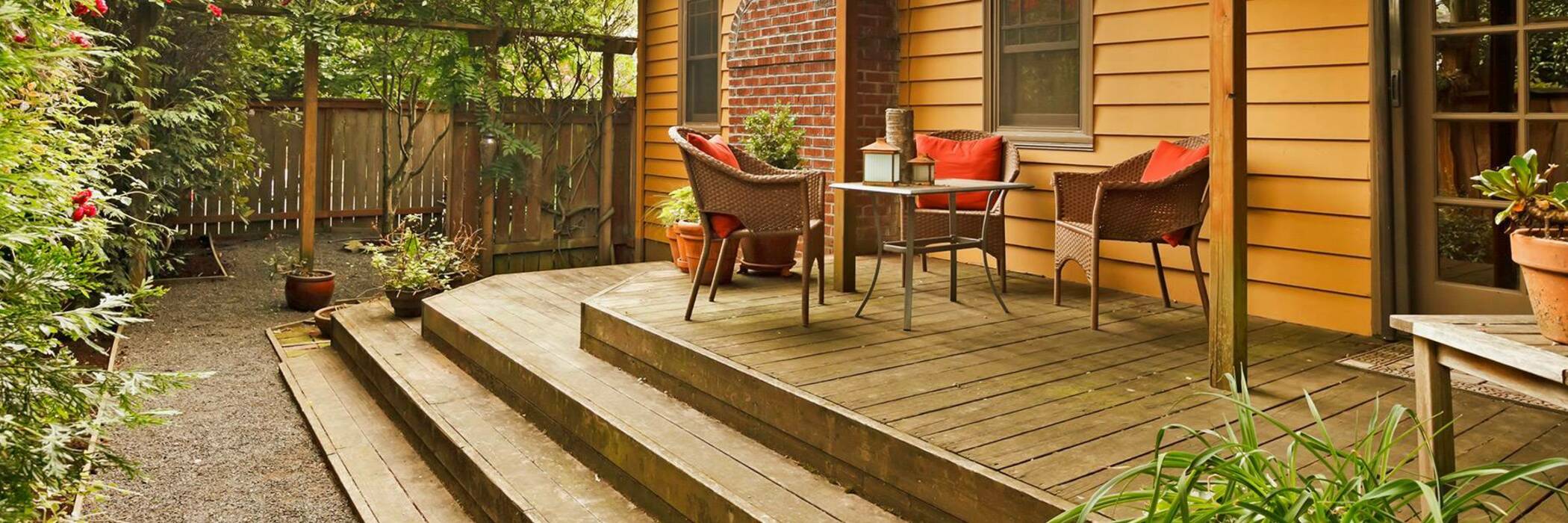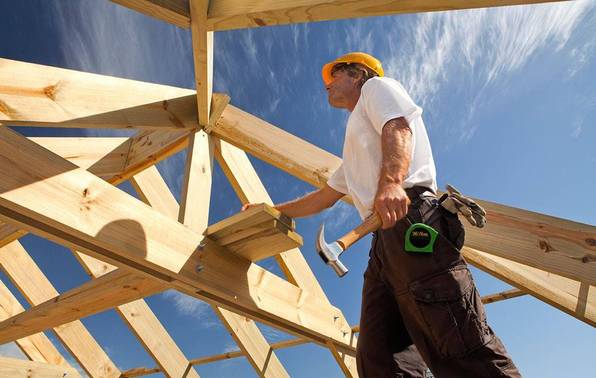
CB Open timber decks
Open timber decks constructed with durable treated timbers should be less of a concern than enclosed balconies.
Open timber decks constructed with durable treated timbers should be less of a concern than enclosed balconies. However, there are still maintenance tasks that should be carried out regularly to ensure the deck is safe.
If you think a deck is a safety hazard you should prevent anyone from using it until it has been assessed and repaired.
Water ponding against house
This can happen if there’s not enough of a drainage gap between the deck and the house. There should be at least a 6mm gap between the decking boards and a bigger gap, up to 12mm, between the house and the deck structure.
If the boards are too close to the house, lift them and reposition or cut them back.
If the deck or deck framing is hard against the cladding this will be a much bigger job. Seek professional advice, particularly if the cladding is likely to be damaged by the work.
Check that flashings take water away from the house and allow it to drain away.
Grime, leaves and moss
Grime, leaves and moss collecting in gaps around a timber deck can lead to moisture build-up or ponding which could rot the deck. Clean and remove leaves, moss and other debris from the deck, paying particular attention to the gaps between the decking boards and outlets. Use a moss remover or solution of one part bleach to four parts water.
Rotten timber
This can be a safety hazard and may support toxic mould, which poses health risks.
Check under the deck and any areas where timber meets other timber (eg joists, bearers, decking) as these areas can trap moisture. Carefully check any dark patches as these indicate high levels of moisture.
Sometimes timber appears fine from the outside even when it has started to rot, so use a screwdriver to see if it is soft underneath or in the joint. Replace rotting timbers immediately.
Blackish stains
Blackish stains around bolt holes can indicate that the bolts are rusting, in which case they’ll need to be replaced. Also check for undersized washers. Bolted connections often require a 50mm x 50mm square washer or a 55mm diameter round washer to be effective.
For decks that are high off the ground, bolts and undersized washers should be replaced by a professional. For a low deck, you may be able to replace the bolts and washers yourself. Use stainless steel bolts if you are near the sea or in a geothermal area.
Loose balustrades or posts
These are a safety hazard because they may fail when they are needed to prevent someone falling.
Ensure they are securely connected to the deck structure and that the barrier doesn’t wobble. If in doubt, ask for professional advice.
Corroding steel connectors
Corroding galvanised steel connectors are a safety risk and should be replaced, preferably with stainless steel products.
For decks that are high off the ground, the work should be done by a professional.
For a low deck, you may be able to replace the connectors yourself.
Mould
Mould can make the deck slimy and slippery, which is a safety hazard. Sweep the deck with a stiff-bristled yard brush. Apply hot water and a weak bleach solution or household products that remove slime and mould. Bleach can damage plants so you may need to protect surrounding vegetation with plastic sheeting while you clean the deck.
For more, see the Ministry of Business, Innovation and Employment’s Building Performance website.
Don’t use a water blaster to clean wall cladding materials as these can cause damage. However, lower pressure water blasters may be fine for open timber decks.
Rot, corrosion or movement in the structure
These could all be safety hazards. Address the rot or corrosion as above. Check bolts and other fastenings for movement.
Loose nuts and bolts
These can be safety hazards. Tighten bolted connections. These will be between diagonal braces and timber poles or posts, where timber posts and beams are bolted together, or where timber beams are bolted to a concrete anchor point.

Building articles
Whether you're planning to build your own home or renovate an existing one, we've got you covered with a wide range of articles covering the whole process.

Renovating articles
Renovating and altering houses is a favourite pastime for many New Zealanders. Our articles take a look at what's involved when you undertake a renovation project.

Home maintenance
Regular maintenance is needed to ensure your house holds its value and remains safe and comfortable to live in.
Member comments
Get access to comment